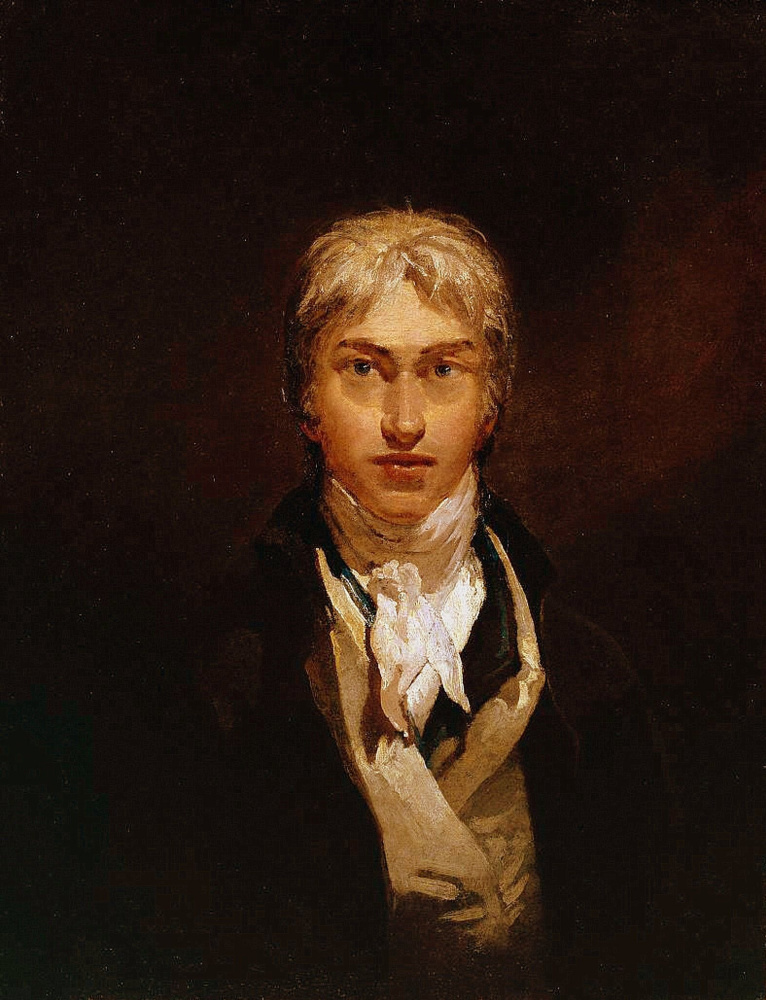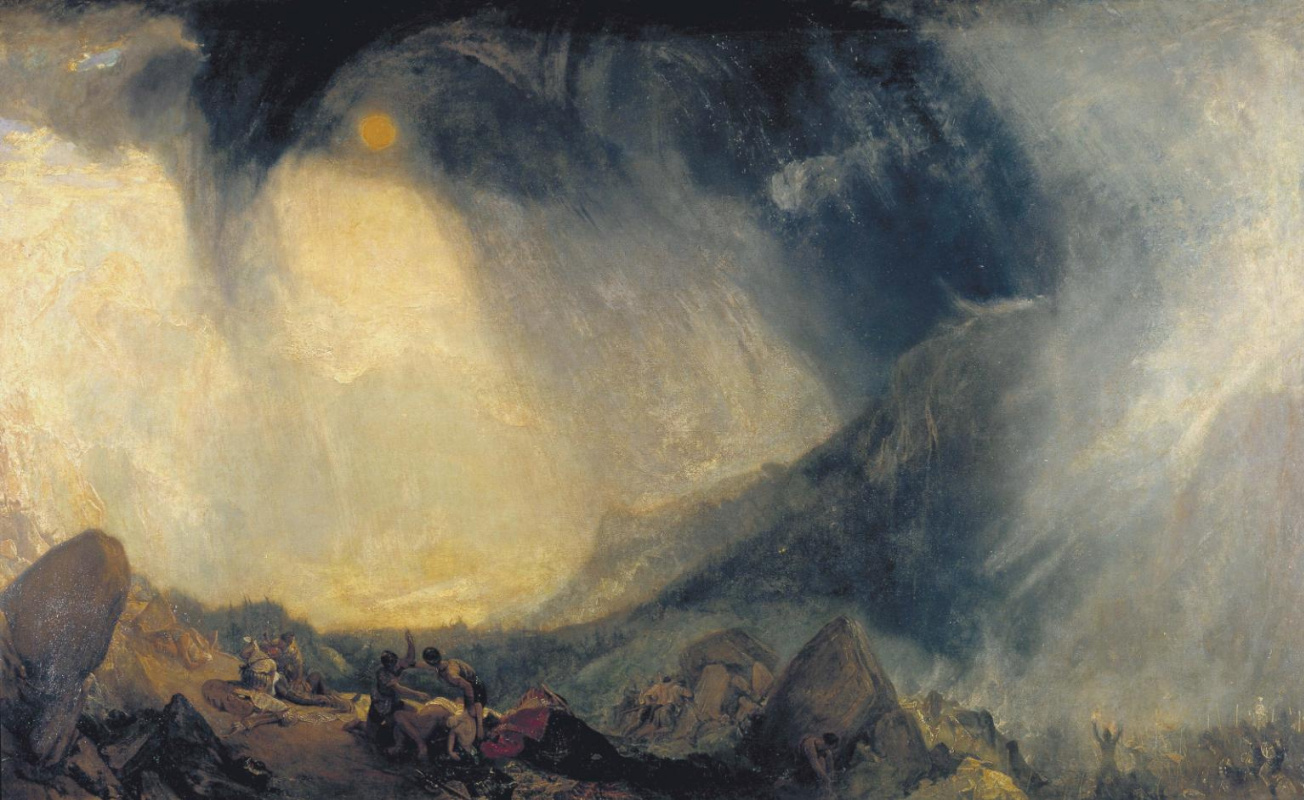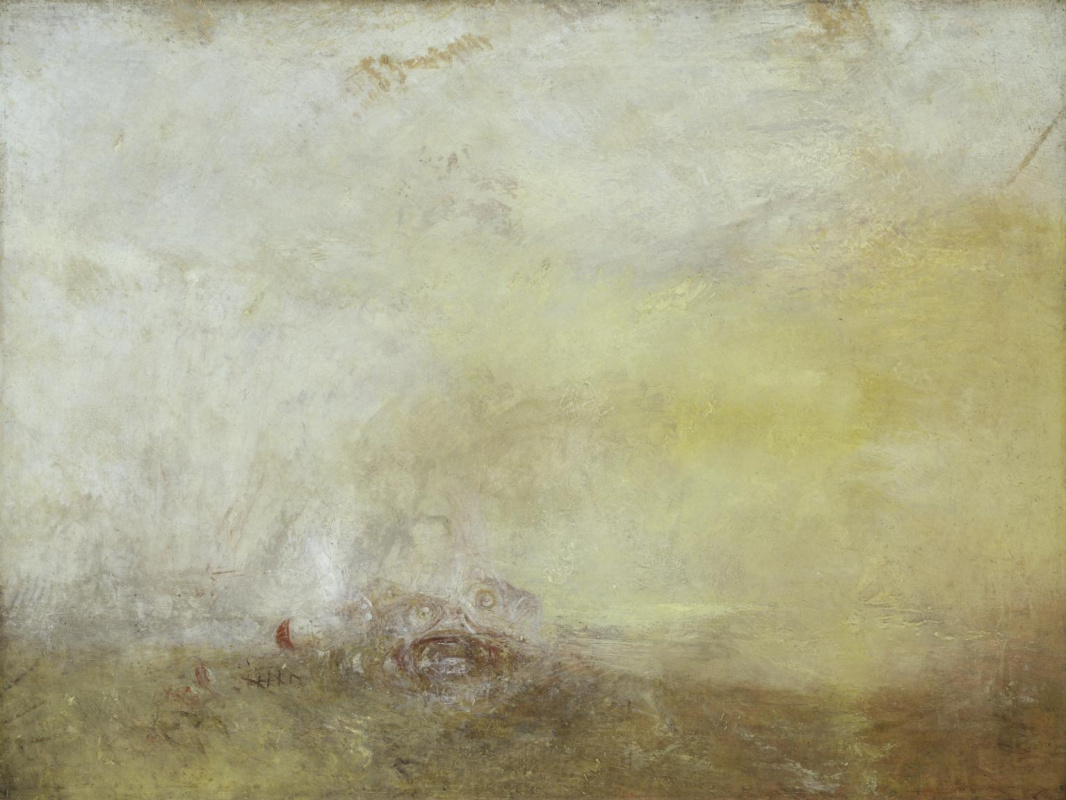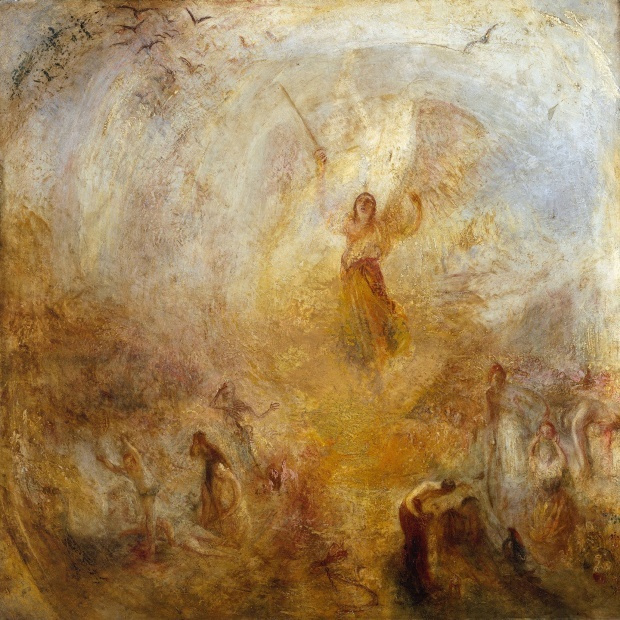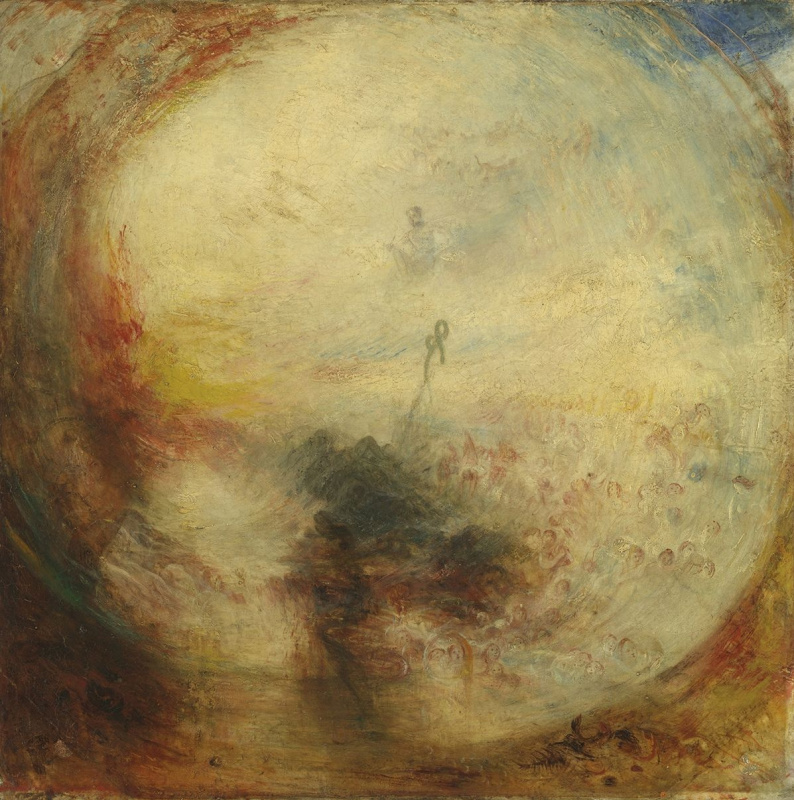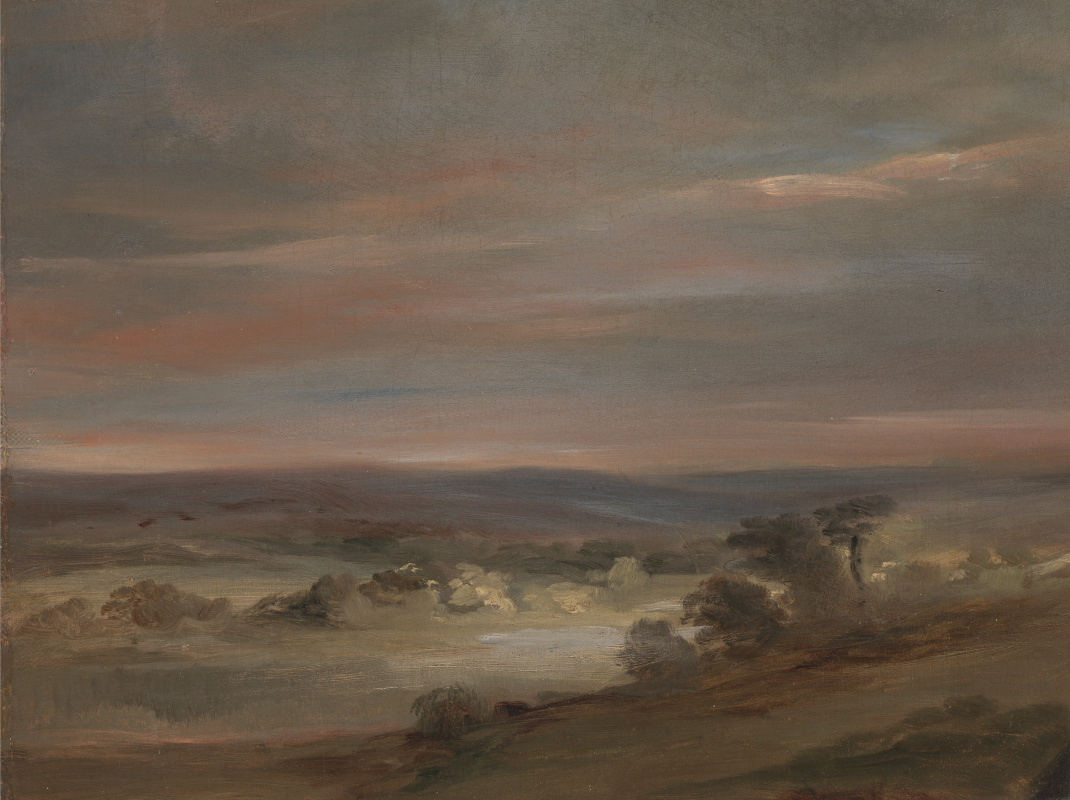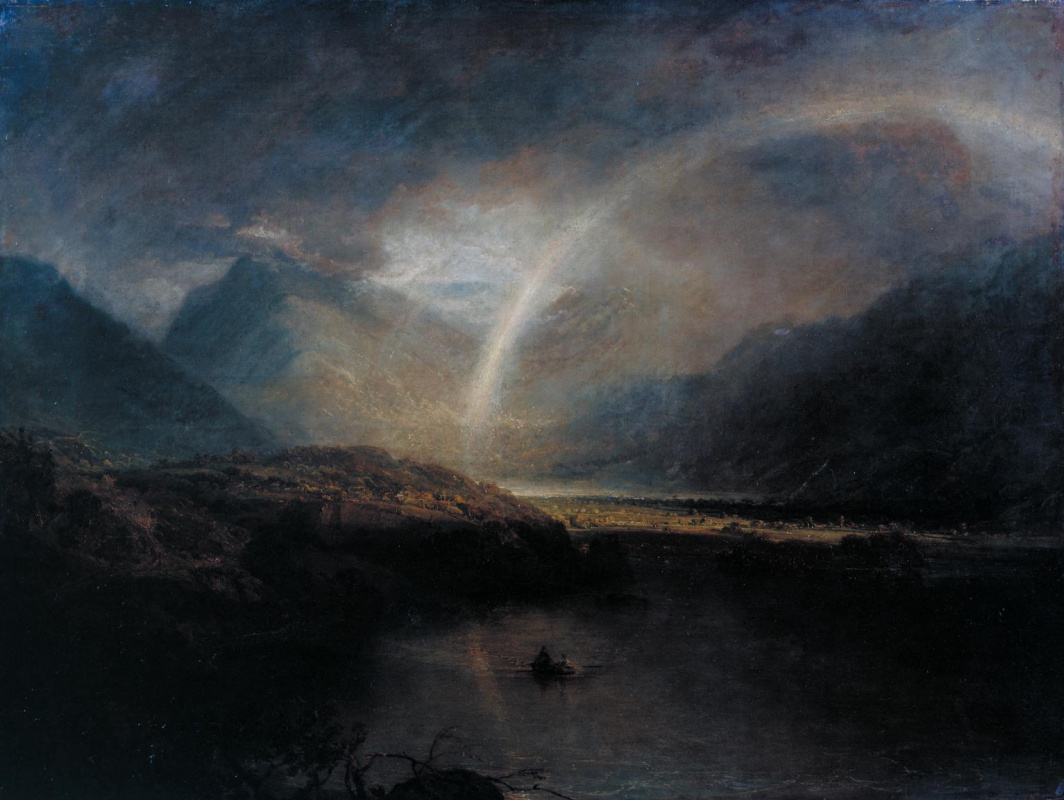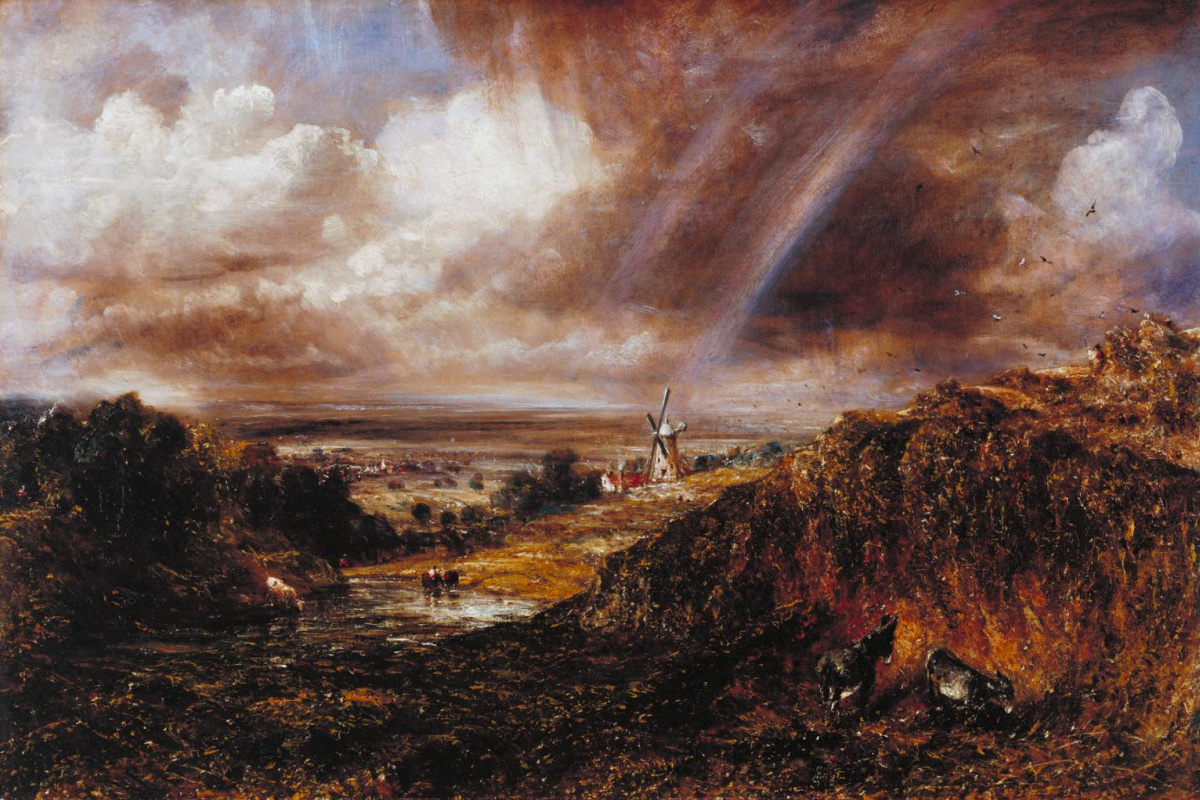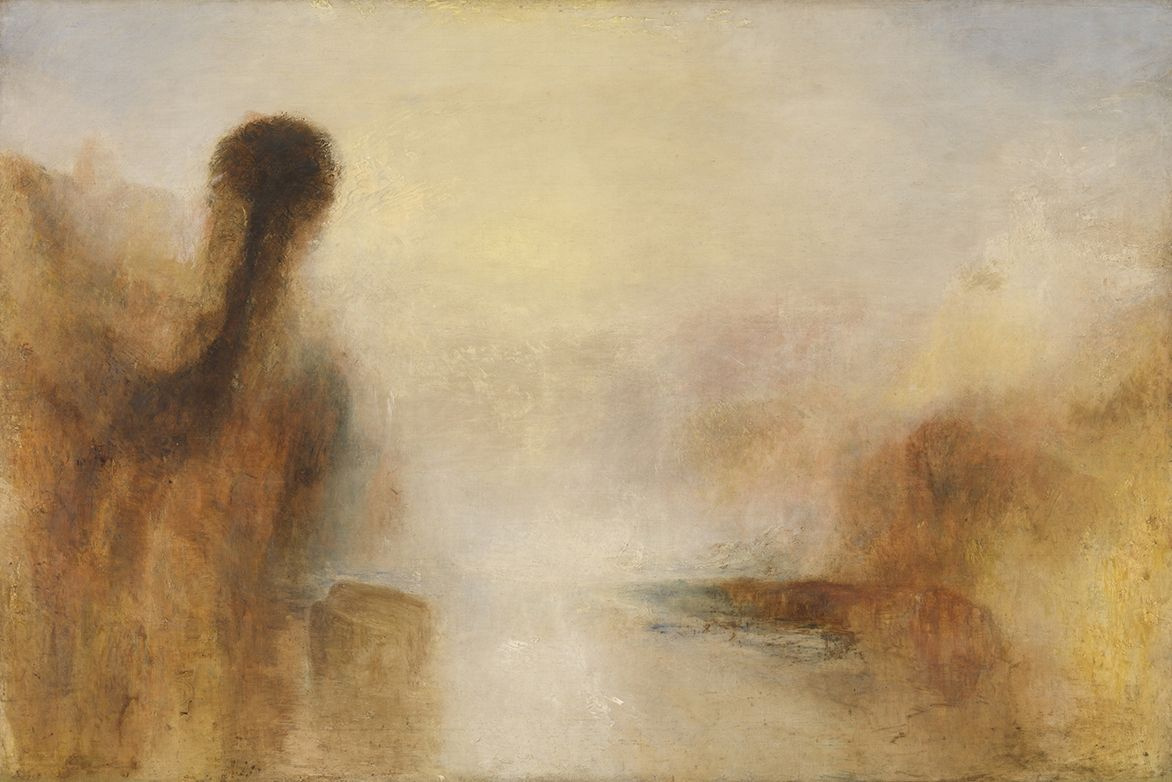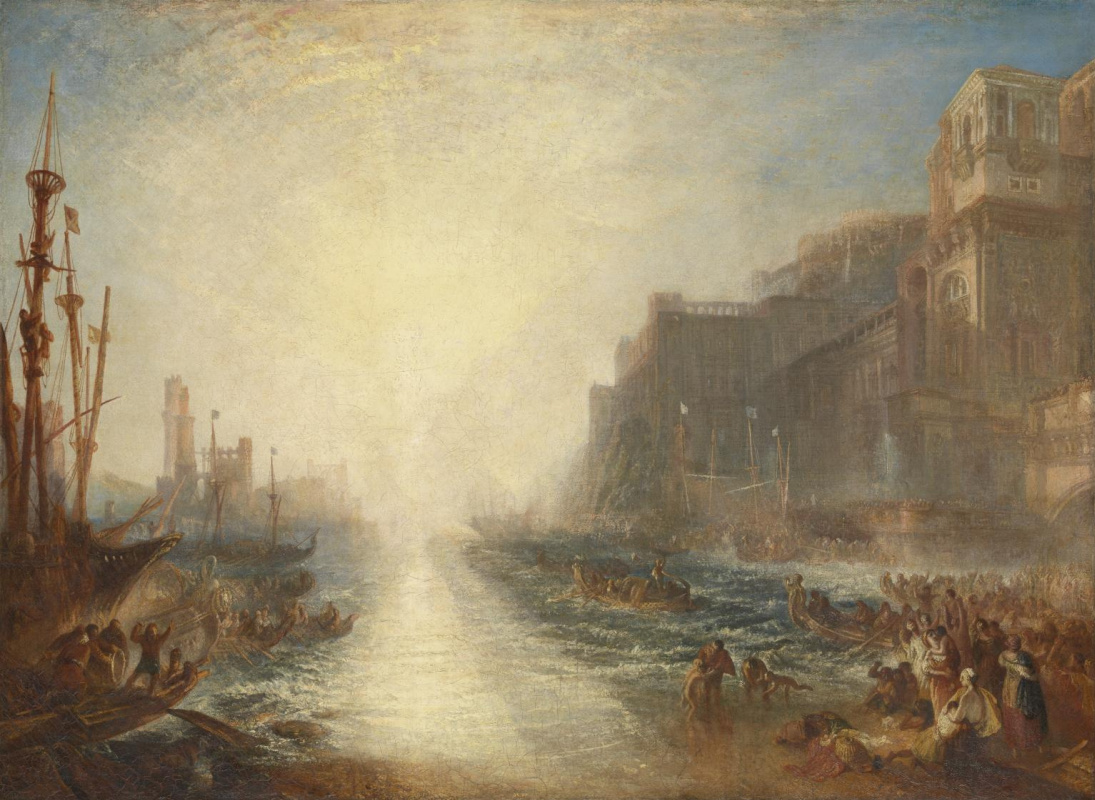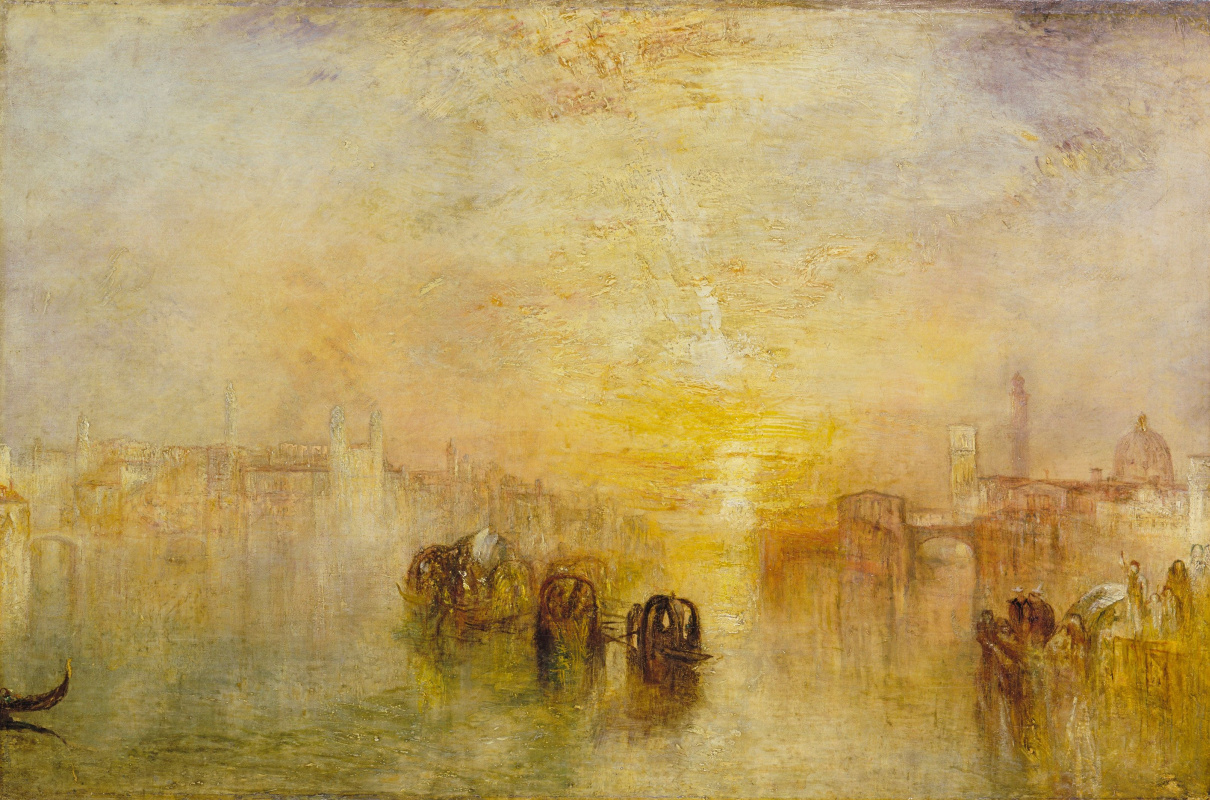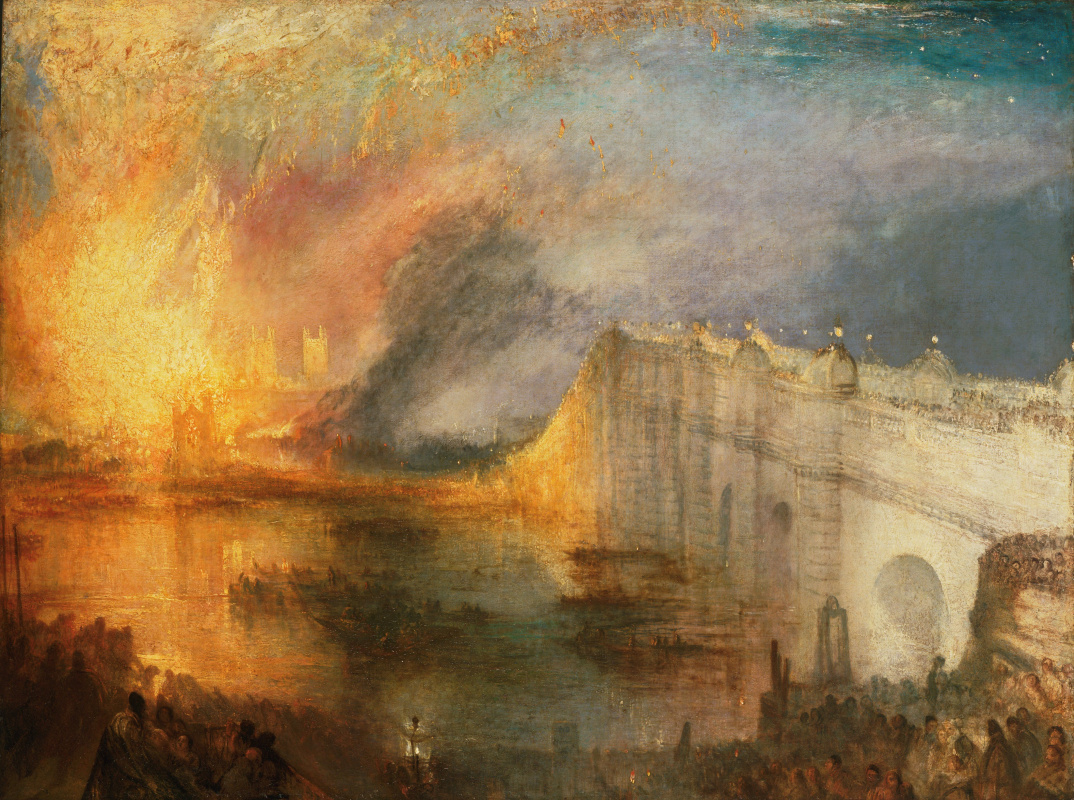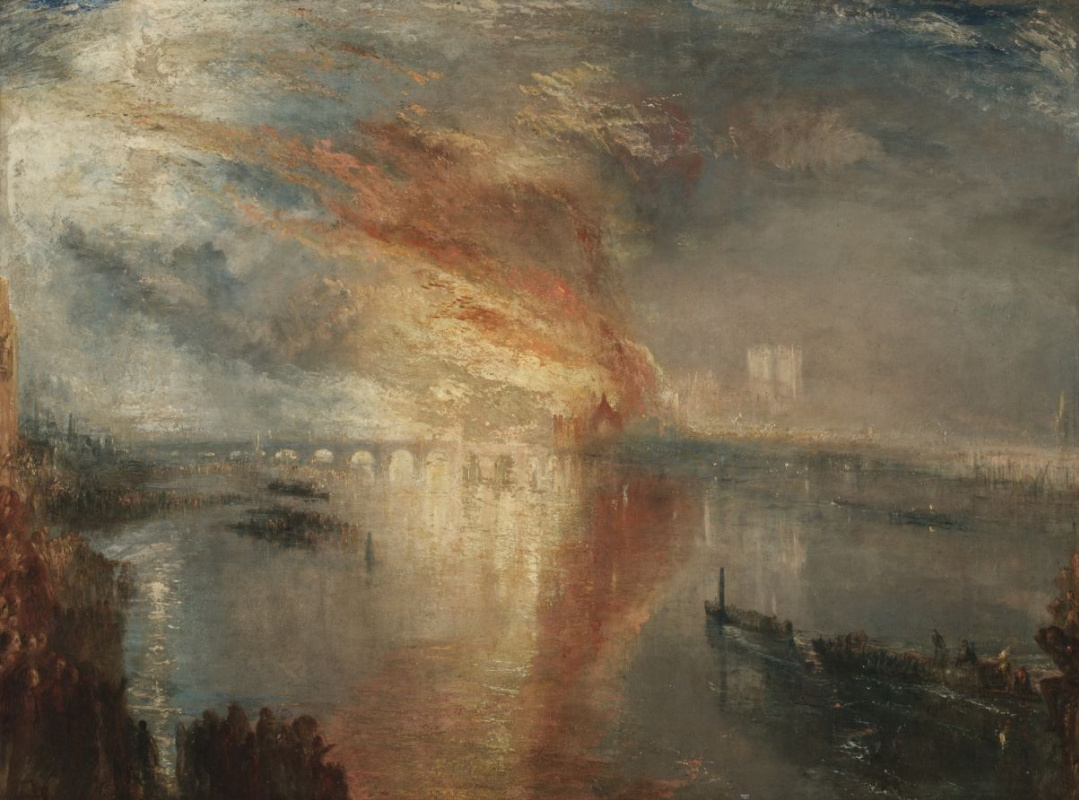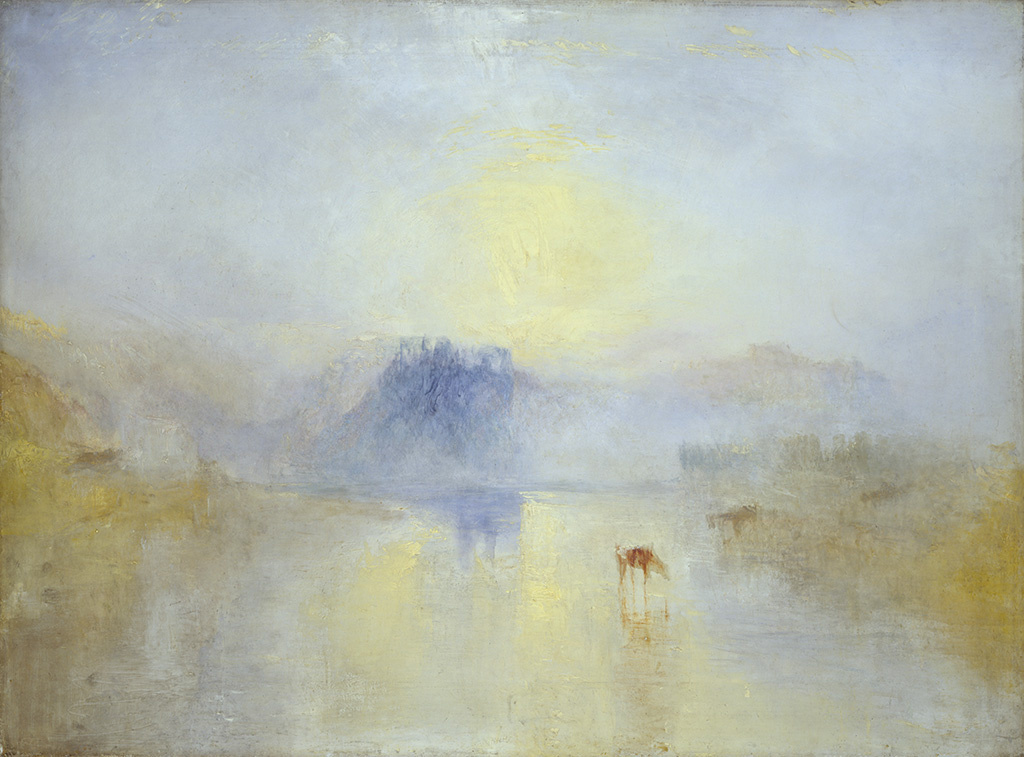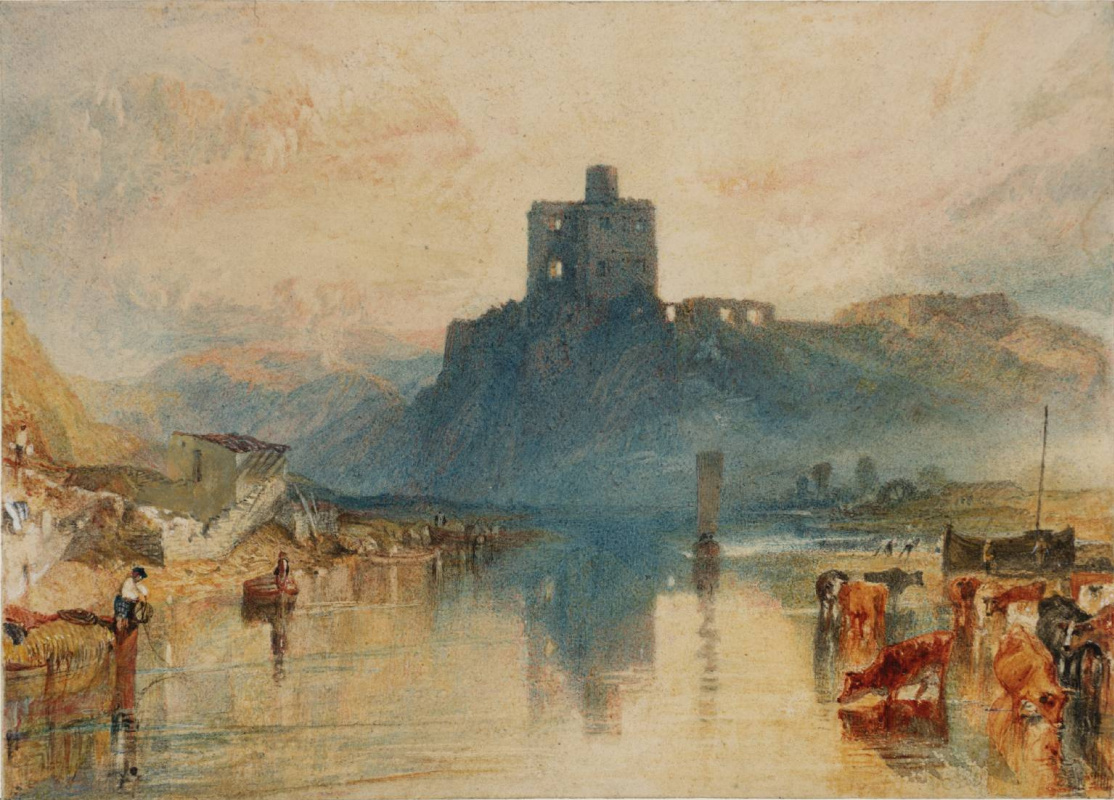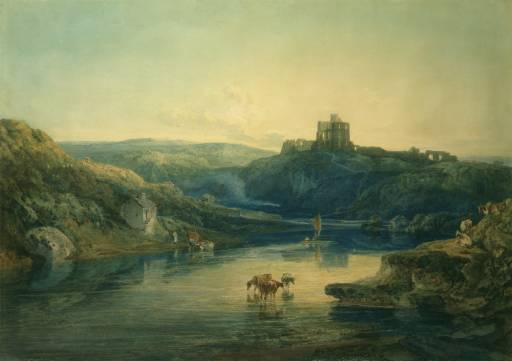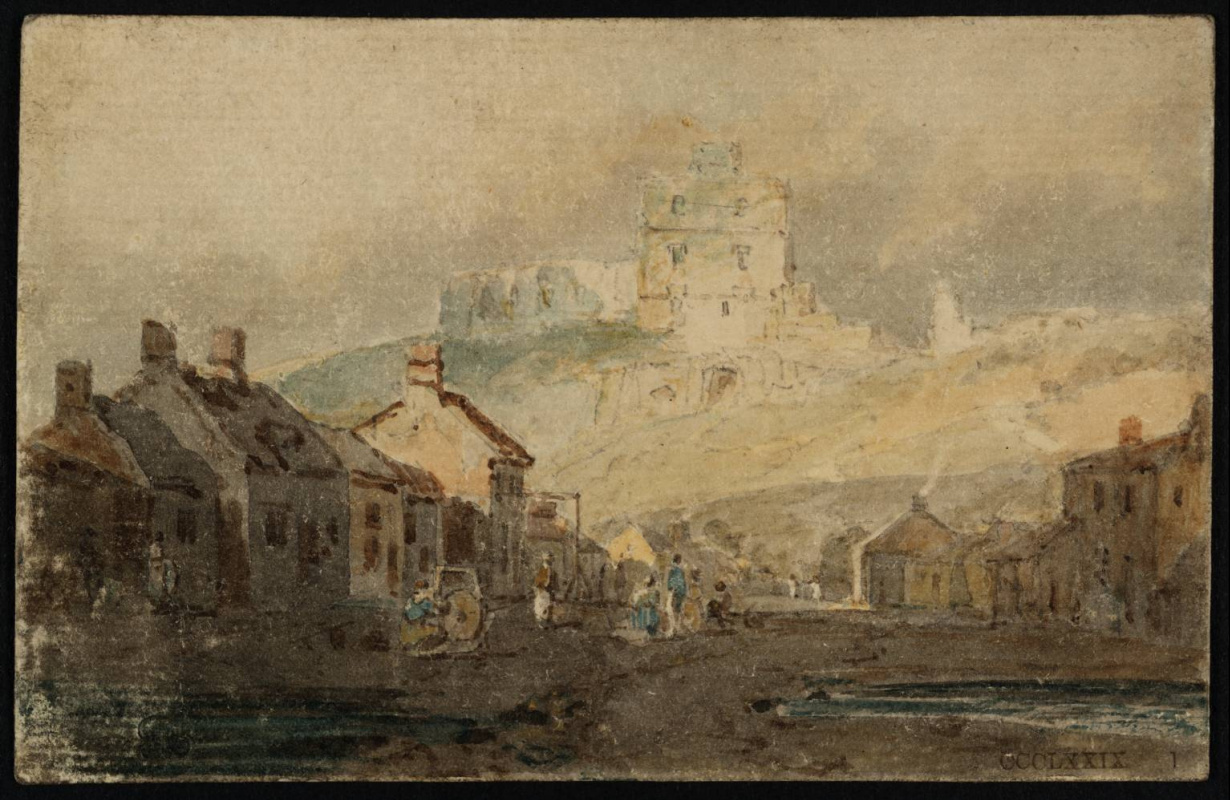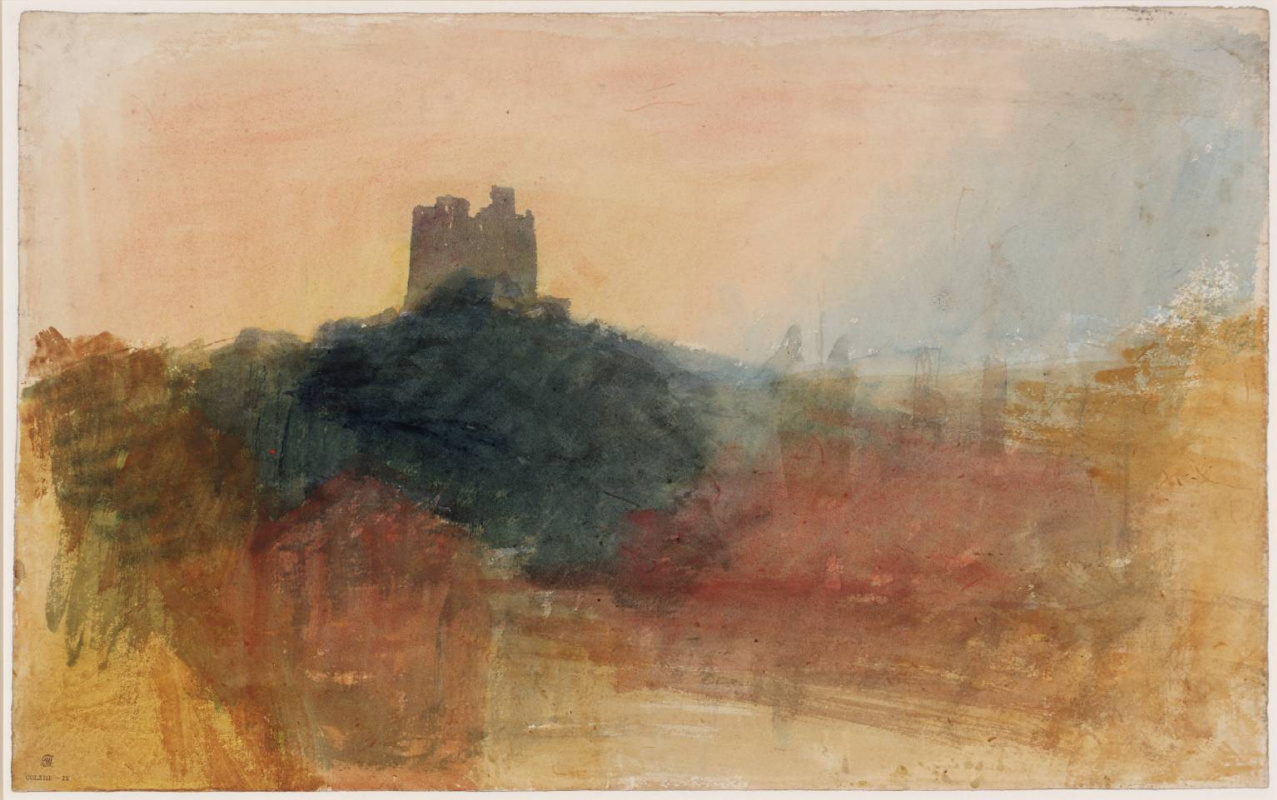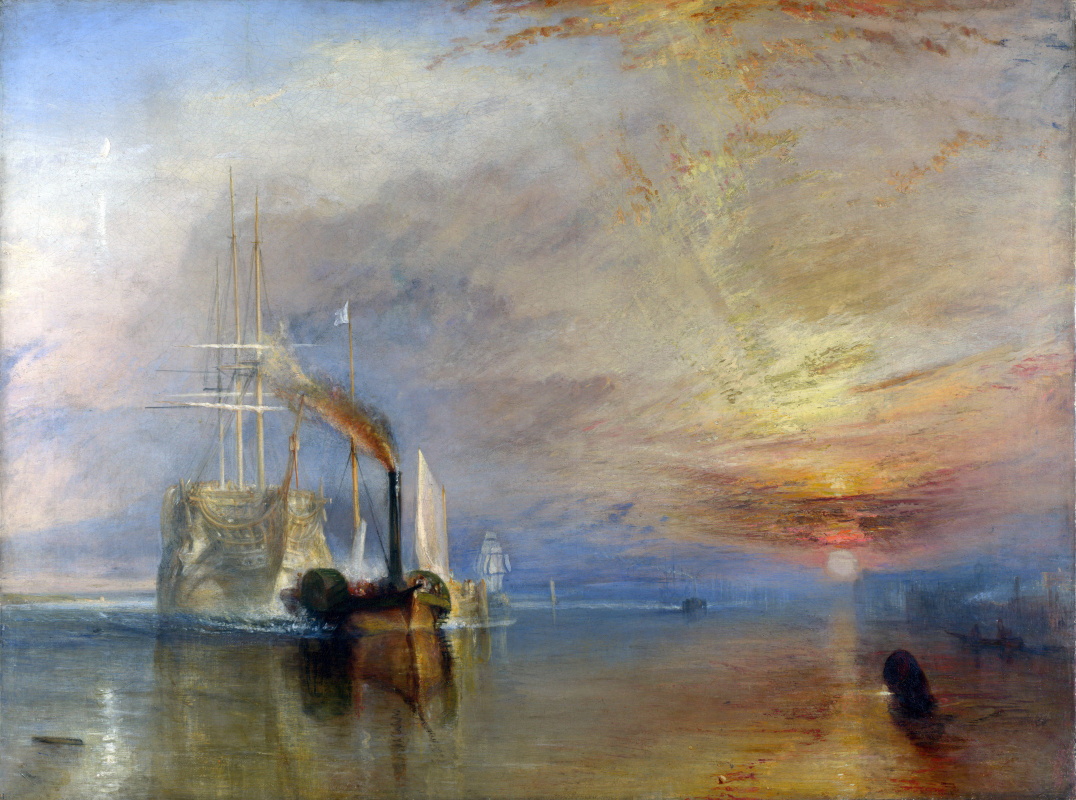American poet Ezra Pound once said that there exist two types of artists. The first one includes those who create beautiful paintings, with all the answers being on their surface. You leave, having seen no more than you had before. The second type includes those who change everything, such as Turner. Their works haunt you, allowing to see beauty in a hundred places that you’ve never noticed before.
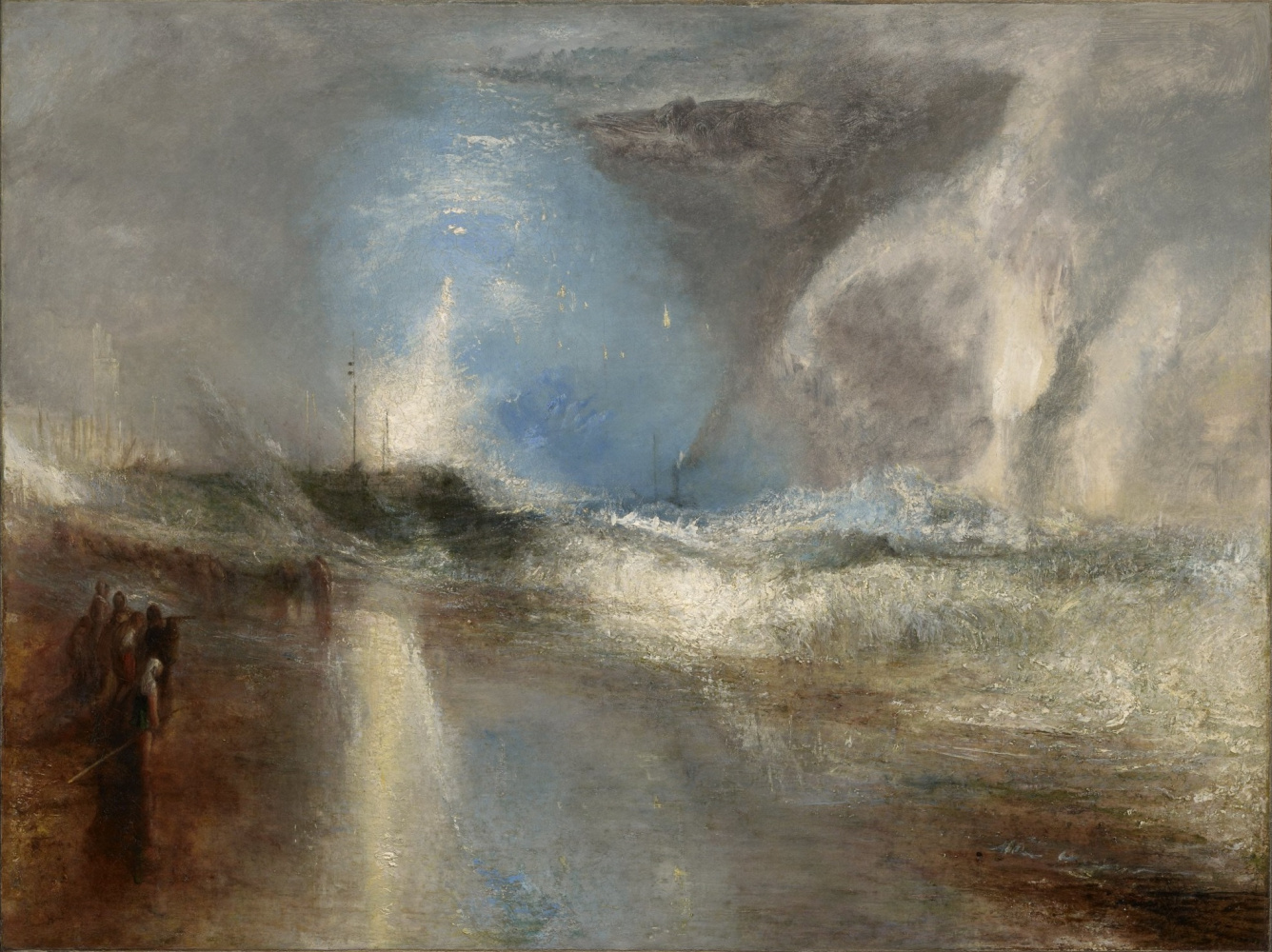
William Turner’s impeccable paintings seem to balance between the two worlds and moods. Serenity is always mixed with the apocalypse, as well as light — with darkness. Critics complained about the artist’s extraordinary nature and his love for the abstractions. This "passion", as art critics later noted, anticipated Impressionism
and Abstract Expressionism
.
Intelligent Cockney
Joseph Mallord William Turner (1775 — 1851) left a lot for his biographers. The son of a barber, Turner overcame the British class differences of the late XVIII — early XIX centuries and became one of the most ambitious, inventive, technically unsurpassed and popular painters of his time, and later — the most famous and controversial artist in the history of the nation.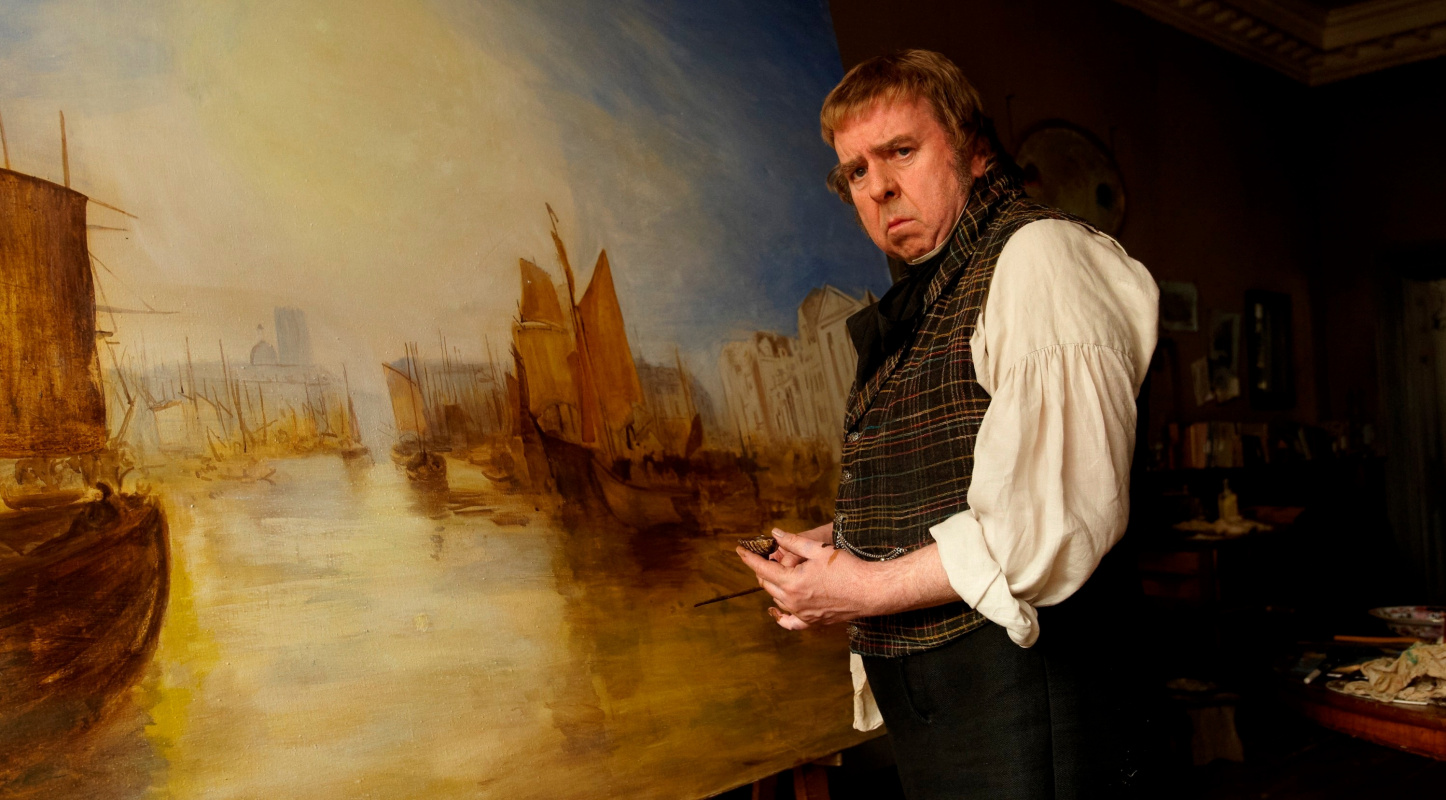
The actor Timothy Spall won the award at the Cannes Film Festival and a number of other prestigious awards for his role as William Turner. Photo via Variety
But living with him was not easy. In the movie "Mr. Turner" by Mike Leigh (2014), the actor Timothy Spall brilliantly portrayed a grumbling grumbler. Biographers describe how the painter spat and poured beer on his canvas, wiped them with his sleeve, scratched the paint on them with his nails, abandoned his friends, patrons and neglected the family for the sake of art. For example, he didn’t go to his alleged daughter Evelina’s wedding, preferring to hunt for an order instead.
Yet, it’s still unknown whether the girl was the offspring of the artist. He had a long-term relationship with her mother Sarah Denby, the widow of a famous musician, and during that period, the woman gave birth to two girls — Evelina and Georgiana, who were considered William’s daughters. However, the recent theory, which is mentioned on the site of the Tate Gallery, suggests that their father was Turner, Sr., making the artist their stepbrother.
Yet, it’s still unknown whether the girl was the offspring of the artist. He had a long-term relationship with her mother Sarah Denby, the widow of a famous musician, and during that period, the woman gave birth to two girls — Evelina and Georgiana, who were considered William’s daughters. However, the recent theory, which is mentioned on the site of the Tate Gallery, suggests that their father was Turner, Sr., making the artist their stepbrother.
Self-portrait
1799, 74.3×58.4 cm
William Turner’s contemporaries used to say that the artist was anything but handsome. He was a typical Cockney, that is, a Londoner from the lower strata, with a characteristic accent, and looked nothing like a gentleman. His self-portrait at the age of 24, created in 1799 on the occasion of his election as a candidate for the Royal Academy of Arts, is widely known. One can see a handsome young man in smart trendy clothes. But, apparently, this image is somewhat idealized.
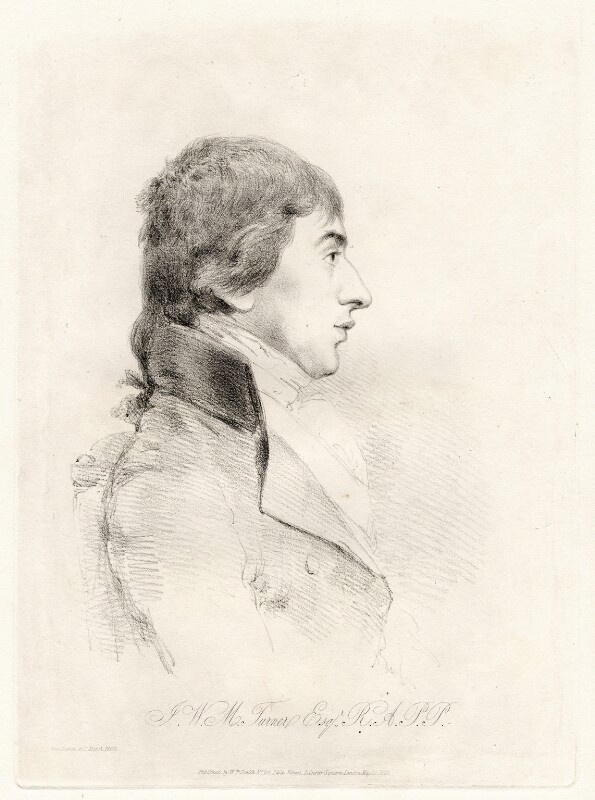
Turner’s pencil portrait, made a year later by George Dance the Younger, depicts a man with large facial features and a hooked nose, similar to Punch — the character from the British Puppet Theatre. Over time, the artist’s appearance became even rougher. A stumpy figure, weather-beaten red face, crooked legs and big feet made him look like a sailor or a coachman. It is necessary to add his "forever unwashed" hands — the result of the artist’s habit of smearing paint on the canvases with his fingers.
On the left: Portrait of Joseph Mallord William Turner, engraving after a drawing by George Dance the Younger. National Portrait Gallery, London
Another unpleasant trait of character the artist had on his record was his stinginess. The author of the biography Turner by Peter Ackroyd gives a lot of evidence of that. For example, a meeting of his character with writer Walter Scott in Scotland, when the former agreed to provide drawings for The Provincial Antiquities and Picturesque Scenery of Scotland, and the latter — to provide them with text. But a few months later Scott wrote to his friend: "Turner's palm is as itchy as his fingers are ingenious. He will do nothing without cash, and anything for it. He is the only man of genius I ever knew who is sordid in these matters." However, why wouldn’t the artist defend his rights? "Scott like nobody else had to understand the value of money as the equivalent of creative work," concluded Ackroyd.
Snow storm. Hannibal with his army crossing the Alps
1812, 146×237.5 cm
Another biographer, George Walter Thornbury, described the widespread story of Turner’s journey to Yorkshire, when he brought the bookseller Robinson a sealed letter of recommendation from London Longman publishers. It was written there that "Above all things remember that Turner is the Great Jew." Most likely, it was about his commerciality, but Robinson took everything literally. He would loudly assume that the guest would not want to go to church on Sunday and apologize when pork was served at the table.
However, biographers balance these caricature images, presenting Turner as an intellectual and a person with feelings carefully hidden under his external rudeness. Having become rich, the artist bought houses and land, but, as Ackroyd noted, he wasn’t always harsh with his tenants. After his death, it turned out that he hadn’t taken a payment from one insolvent tenant for several years. And, having bought three neighbouring plots of land in Twickenham, he bequeathed to open there an almshouse for his poor colleagues.
However, biographers balance these caricature images, presenting Turner as an intellectual and a person with feelings carefully hidden under his external rudeness. Having become rich, the artist bought houses and land, but, as Ackroyd noted, he wasn’t always harsh with his tenants. After his death, it turned out that he hadn’t taken a payment from one insolvent tenant for several years. And, having bought three neighbouring plots of land in Twickenham, he bequeathed to open there an almshouse for his poor colleagues.
Sunrise with sea monsters
1845, 91.4×121.9 cm
The writer and TV producer Franny Moyle in her book depicts Turner, who was really loved by a small circle of close people; businessman-innovator, artfully pursuing the policy of the Royal Academy and receiving commissions both from the aristocracy and, later, from the nouveau riches of the Industrial Revolution.
The Playwright of light
William Turner is the greatest playwright of light. When he was only four days old, there happened a curious optical phenomenon in which three suns appeared in the sky. And, according to the legend, shortly before his death, the artist said: "The sun is God". It is not certain whether the artist really said this, but there is no doubt that throughout his life he was looking for ways to depict sunlight, studied it over and over again and strove to reflect all its shades with paint. The celestial body appeared on many of his canvases, sometimes as something very natural and elementary, and sometimes as something mysterious and mystical.
Angel standing in the sun
1846, 78.7×78.7 cm
At that time, the composition of the sun and its source of energy were still a mystery. The Royal Scientific Society shared its building with the Academy of Arts, and Turner attended lectures there, discussing storms, new discoveries in the field of colour and light, magnetism and electricity with scientists such as Michael Faraday and Mary Somerville. His visual experiments might have been influenced by the latest scientific theories about the sun, as well as his palette — by Johann Goethe’s work Theory of Colours. This book, published in 1810, contains such concepts as "coloured shadows", "refraction", "chromatic aberration" and general information about how colour is perceived in various circumstances.
In order to reproduce the solar effects in paint, Turner resorted to a number of techniques. For example, he often put the lightest areas together with very dark ones, intensifying the contrast, used arcs, spheres, radial circles of colour, broken strokes, textured oil paint and smooth watercolour blurring. Sometimes he depicted sunlight as something tangible, and sometimes it was a dazzling glow that was hard to look at. "Turner was just trying to paint the sun. It seems he really wanted to convey its energy and light in his paintings, " the British art critic Nicola Murbi remarked.
In order to reproduce the solar effects in paint, Turner resorted to a number of techniques. For example, he often put the lightest areas together with very dark ones, intensifying the contrast, used arcs, spheres, radial circles of colour, broken strokes, textured oil paint and smooth watercolour blurring. Sometimes he depicted sunlight as something tangible, and sometimes it was a dazzling glow that was hard to look at. "Turner was just trying to paint the sun. It seems he really wanted to convey its energy and light in his paintings, " the British art critic Nicola Murbi remarked.
John Constable, who was Turner’s contemporary, had the same scientific thoroughness concerning atmospheric phenomena. But the relationship between these two artists did not work out, despite the fact that both were "the birds of the nest" of Sir Joshua Reynolds, the first president of the Royal Academy of Arts, and the greatest landscape
painters of their time.
Peter Ackroyd described the anecdote, when before the exhibition of Constable and Turner their paintings had been hanged next to each other, and the former put the final touches on his canvas with reddish pigment and vermilion. The latter, having watched his colleague, put "a round daub of red lead, somewhat bigger than a shilling, on his grey sea, went away without saying a word." Of course, the bright lead made Constable’s colours look weaker, ant the artist complained that "he has been here and fired a gun". At the last minute Turner took up his brush and turned the red spot into a buoy.
They both shared the same method of creating oil sketches in the open air. Turner had a portable paint-box with various pigments wrapped up in bladders, protecting them from drying out. The tin tube for oil paints was patented during the life of the artist, in 1841, but only his Impressionist followers were able to take advantage of this invention. This finding (among several others) allowed them to create in the open air not only sketches but also the finished works.
Peter Ackroyd described the anecdote, when before the exhibition of Constable and Turner their paintings had been hanged next to each other, and the former put the final touches on his canvas with reddish pigment and vermilion. The latter, having watched his colleague, put "a round daub of red lead, somewhat bigger than a shilling, on his grey sea, went away without saying a word." Of course, the bright lead made Constable’s colours look weaker, ant the artist complained that "he has been here and fired a gun". At the last minute Turner took up his brush and turned the red spot into a buoy.
They both shared the same method of creating oil sketches in the open air. Turner had a portable paint-box with various pigments wrapped up in bladders, protecting them from drying out. The tin tube for oil paints was patented during the life of the artist, in 1841, but only his Impressionist followers were able to take advantage of this invention. This finding (among several others) allowed them to create in the open air not only sketches but also the finished works.
The Painter of the elements
One of the most bright paintings, where thesun acts out as the main character is Regulus. It was painted and exhibited after the second visit of Turner to Italy in 1828, and then processed and shown again in London in 1837. The artist illustrated an episode from the life of the Roman General of the III century Mark Atilia Regula, who represented the stoic dignity and sacrifice. This commander was captured by the Carthaginians who wanted to send him to Rome to negotiate. After his refusal, his eyelids were cut off and he was forced to look at the sun until he went blind, and then executed.
Regul
1828, 124×91 cm
Turner painted his character with a few pale strokes in the right part of the canvas which makes him almost impossible to find. This way, the artist forced the viewer to take the place of the Regulus and to peer at the bright light on canvas in order to find the protagonist. The author not only challenged the norms of historical painting but also used the classic story to cleverly respond to criticism of his work, "blinding" and "almost ripping the eyes," as the reviewers wrote.
"He was in fact now dwelling in his own realm of radiance, where few people could reach him. He was also moving effortlessly between the past and the present, in that enchanted space where his vision could encompass alternative realities", noted Peter Ackroyd.
"He was in fact now dwelling in his own realm of radiance, where few people could reach him. He was also moving effortlessly between the past and the present, in that enchanted space where his vision could encompass alternative realities", noted Peter Ackroyd.
The path to the ball (San Martino)
1846, 61.6×92.4 cm
A fiery element became the focus of another work — it was fire, which broke out in one of the old buildings of the Palace of Westminster on 16th October 1834. This spectacle attracted a huge crowd, watching the flames from both banks of the Thames. Turner with a sketchbook and watercolours sketched the burning of the Parliament from Westminster bridge and Waterloo bridge. Later he embodied his impressions on two of the canvases with oil (both are now in museums in the US — in Philadelphia and Cleveland), adding some reports from the Times to them.
The fire in the upper and lower houses of Parliament on 16 October 1834
1835, 92.1×123.2 cm
The first The Fire at the Parliament Building was presented in February 1835, on the exhibition at the Britis Institute. It was a view of the Parliament from the opposite bank of the River Thames. The building on the other side of the river was enveloped in golden flame. The fire reflected on the water surface. On the right stands a block of the Westminster bridge, which is larger than in reality, but in the perspective, it is sharply distorted in the part that is lit by the flame.
The second picture was exhibited at the Royal Academy in the summer of that year. It depicts a similar scene: the cloth of fire and smoke cuts through the sky over the Thames and the water surface at the same time, and people on the river bank and in boats watch it.
The second picture was exhibited at the Royal Academy in the summer of that year. It depicts a similar scene: the cloth of fire and smoke cuts through the sky over the Thames and the water surface at the same time, and people on the river bank and in boats watch it.
A fire in the houses of Parliament on 16 October 1834
1835, 92.5×123.2 cm
"The critic in the Morning Chronicle declared, that the Ministers of the Academy should at least occasionally throw a wet blanket or something like that either on this king of fires or on his works…", writes Peter Ackroyd.
Norham castle
In the last years of his life, Turner’s work became more radical. The accuracy and detail he often sacrificed the expression of color. Critics of the time were confused and openly wondered whether the artist fell into senile dementia. One of the earliest patrons of Turner said: "Now he paints as if his brain and imagination are mixed on a palette with soapy water and foam".
Norham Castle, Sunrise
1845, 90.8×121.9 cm
An example of such works may be a landscape Norham Castle, Sunrise, which never exhibited during the artist’s life. Some critics consider the painting as "impressionist work before the impressionists" and it raises some intriguing questions. "Whether the painting is finished? Or maybe Turner painted it for himself, considering too radical for those times", explains David Blayney Brown, curator of the Tate Gallery. "Or he left the picture in the studio as a kind of pointer to the development of art. We don’t know". All agree to the fact that in the mid-1840s nobody painted this way.
Turner gave a special role to Norham Castle. One day, as a middle-aged famous artist, he drove past the ruins of the fortress and suddenly stood up in the carriage and bowed to them. And to his astonished companions he said that once in his youth, he depicted Norham Castle and since that time he had lots of customers. He returned to this plot again and again, and the last view — where the ruins appear only as a vague spot, shrouded in a Golden glow — can be considered as a symbol of memory, storing bright images of youth.
Turner gave a special role to Norham Castle. One day, as a middle-aged famous artist, he drove past the ruins of the fortress and suddenly stood up in the carriage and bowed to them. And to his astonished companions he said that once in his youth, he depicted Norham Castle and since that time he had lots of customers. He returned to this plot again and again, and the last view — where the ruins appear only as a vague spot, shrouded in a Golden glow — can be considered as a symbol of memory, storing bright images of youth.
"His late paintings were not in any case meant to be immediately comprehended. When Ruskin said to him that "the worst of his pictures was that one could never see enough of them," he replied, "That's part of their quality", says Peter Ackroyd. And while art critics thought that an ageing painter was going crazy, he, in the middle of the XIX century, invented not even impressionism
, the forefather of which he is considered, but all modern painting.
He is called the teacher of Mark Rothko and Jackson Pollock: a hundred years before them, he freed painting from the need to imitate reality and copy it. They say that after viewing Turner’s paintings you need to give your eyes time to get used to the world around you, which in comparison with the shining Turner’s world looks as if you had a cataract.
He is called the teacher of Mark Rothko and Jackson Pollock: a hundred years before them, he freed painting from the need to imitate reality and copy it. They say that after viewing Turner’s paintings you need to give your eyes time to get used to the world around you, which in comparison with the shining Turner’s world looks as if you had a cataract.
The Fighting Temeraire tugged to her last berth to be broken up
1839, 90.8×121.9 cm
Arthive: read us on Telegram and watch us on Instagram
The main illustration: William Turner, Rockets and Blue Lights (Close at Hand) to Warn Steam Boats of Shoal Water (1840), Sterling and Francine Clark Art Institute, Williamstown
The main illustration: William Turner, Rockets and Blue Lights (Close at Hand) to Warn Steam Boats of Shoal Water (1840), Sterling and Francine Clark Art Institute, Williamstown






